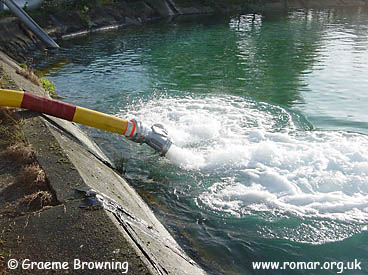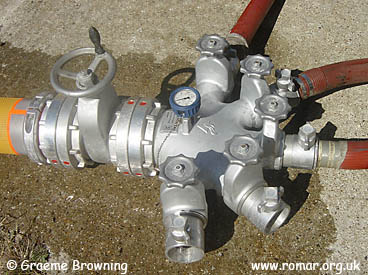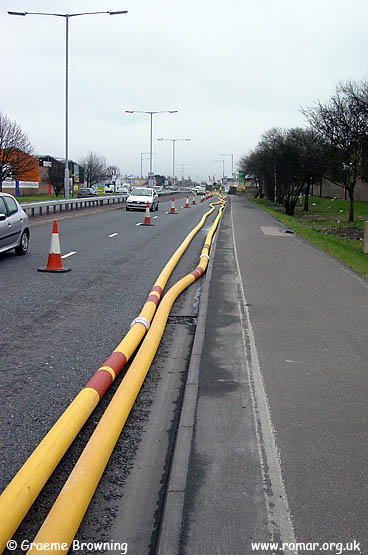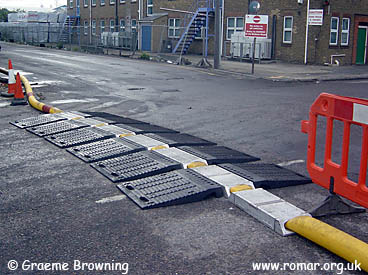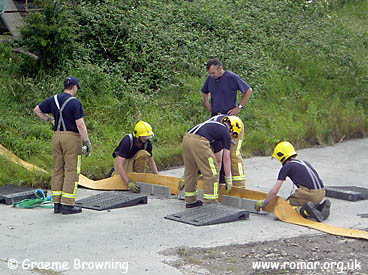

Fire service historian and author
Roger Mardon


www.romar.org.uk
© Copyright Roger Mardon
www.romar.org.uk
All rights reserved
Previous
Next
The principle of the HVP system is to deliver volume not pressure and theoretically
up to 8,000 litres (1,760 gallons) of water per minute can be discharged at the delivery
end up to 3km away. For firefighting purposes this would normally be through 5-
Hose lines can be doubled or trebled as required and hose ramps can be positioned to enable traffic to cross the lines but only one set of ramps is carried for each kilometre of hose. The ramps comprise aluminium squeeze blocks which do not reduce the water flow through the hose lines.
